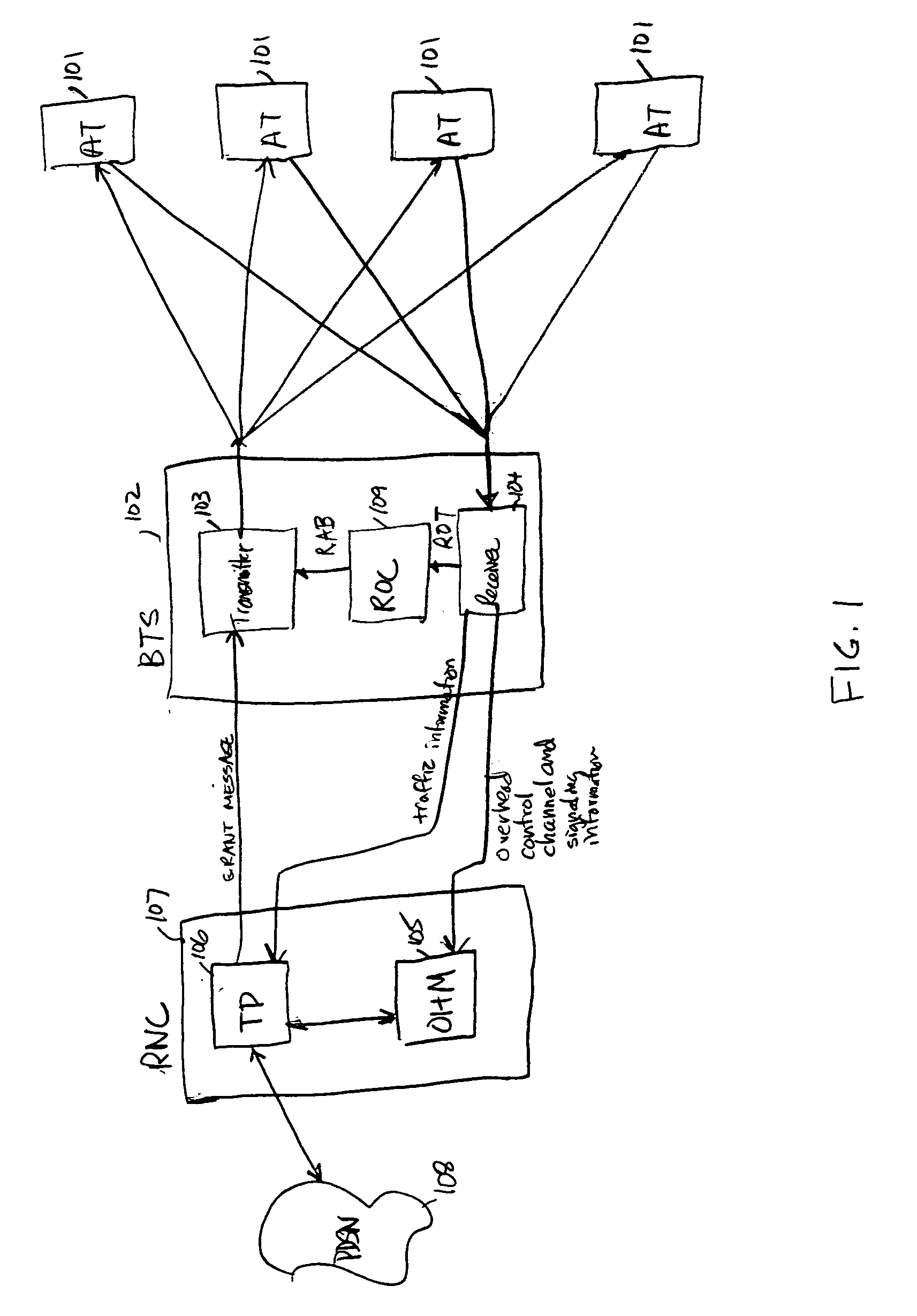Method for reverse link congestion overload control in wireless high speed data applications
a high-speed data and reverse link technology, applied in the field of reverse link congestion overload control, can solve the problems of reducing the performance of all ats, radio link cannot handle the number of ats, discontinuous high-speed data transmitted by ats, etc., and achieve the effect of distributing fairness
- Summary
- Abstract
- Description
- Claims
- Application Information
AI Technical Summary
Benefits of technology
Problems solved by technology
Method used
Image
Examples
Embodiment Construction
[0014] With reference to FIG. 1, in a prior art wireless communications system 100 in accordance with exemplary CDMA2000 DO Rev A standards, a plurality of ATs 101 have wireless connections established with BTS 102. Transmitter 103 within BTS 102 transmits high-speed data downlink (forward link) to ATs 101 while the ATs transmit high-speed data uplink (reverse link) to receiver 104 within BTS 102. Receiver 104 within BTS 102 sends received overhead control channel information and signaling information to Overhead Manager (OHM) 105 and received traffic information to Traffic Processor (TP) 106 within RNC 107. The traffic information (i.e., high speed data) that TP 106 receives from BTS 102 is sent onto the Public Data Switched Network (PDSN) 108 for transmission to its intended destination, and the traffic information that TP 106 receives from the PDSN 108 that is directed to the ATs currently within the coverage area of BTS 102 is sent to transmitter 103 within BTS 102 for downlink ...
PUM
 Login to View More
Login to View More Abstract
Description
Claims
Application Information
 Login to View More
Login to View More - Generate Ideas
- Intellectual Property
- Life Sciences
- Materials
- Tech Scout
- Unparalleled Data Quality
- Higher Quality Content
- 60% Fewer Hallucinations
Browse by: Latest US Patents, China's latest patents, Technical Efficacy Thesaurus, Application Domain, Technology Topic, Popular Technical Reports.
© 2025 PatSnap. All rights reserved.Legal|Privacy policy|Modern Slavery Act Transparency Statement|Sitemap|About US| Contact US: help@patsnap.com



